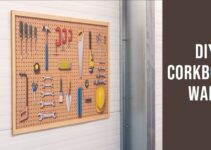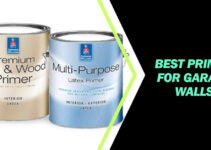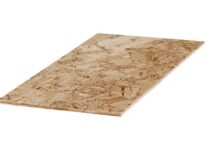When it comes to transforming your garage into a functional and aesthetically pleasing space, the walls play a crucial role.
While drywall has long been a standard choice for garage walls, there’s a world of innovative alternatives available that can elevate your garage’s appeal and functionality.
In this article, we’ll delve into a variety of garage wall ideas without drywall, exploring materials such as wood sheathing, Slatwall, FRP panels, PVC panels, and even the timeless charm of lath and plaster.
By the end of this read, you’ll have a comprehensive understanding of these options, their benefits, costs, and installation processes.
Why Use an Alternative to Drywall?

Drywall, though common, may not always be the best fit for your garage. It can be prone to damage from impacts, humidity, and temperature fluctuations.
Opting for alternatives allows you to customize your garage’s appearance and functionality while addressing these concerns.
Overview of Materials
- Wood Sheathing: Wood sheathing is a versatile choice that provides both durability and a rustic charm. It offers a warm aesthetic and can be easily painted or stained to match your desired garage theme. Whether you choose plywood or oriented strand board (OSB), wood sheathing is an affordable and DIY-friendly option.
- Slatwall: Slatwall systems are a game-changer when it comes to garage organization. These panels feature horizontal grooves, allowing you to easily hang and rearrange hooks, shelves, and various storage accessories. Slatwall not only enhances your garage’s appearance but also maximizes its functionality by keeping tools and equipment off the floor.
- FRP Panels: Fiberglass Reinforced Plastic (FRP) panels are an excellent choice for those seeking a sleek and modern look. These panels are resistant to moisture, making them suitable for garages where humidity is a concern. FRP panels are easy to clean and maintain, making them a practical option for busy spaces.
- PVC Panels: PVC panels are another moisture-resistant option that offers a clean and polished appearance. These panels interlock, creating a seamless and smooth surface that can instantly transform the look of your garage. PVC panels are also resistant to mold and mildew, ensuring a hygienic environment.
- Lath and Plaster: For homeowners who appreciate classic charm and craftsmanship, lath and plaster provide a timeless appeal. While this option requires more skill to install, it offers a unique texture and can be paired with various finishes to achieve the desired look.
Specific Examples
1. Wood Sheathing
Wood sheathing is a type of paneling made of plywood, OSB, or oriented strand board. It is a simple and affordable way to finish your garage walls, and it can be installed directly over the studs.
The wood sheathing is a durable material that can withstand moisture and pests. It is also a good choice if you want to add insulation to your garage walls.
To install wood sheathing, you will need to measure the area you need to cover and cut the panels to size. Then, you will need to attach the panels to the studs using screws or nails.
Once the panels are in place, you can add insulation and then finish the walls with paint, wallpaper, or another type of covering.
Here are some of the pros and cons of using wood sheathing as a garage wall finish:
Pros:
- Durable and can withstand moisture and pests
- Affordable
- Easy to install
- Can be customized with paint, wallpaper, or other coverings
Cons:
- Can be difficult to work with
- Can warp or shrink over time
- Not as fire-resistant as some other materials
2. Slatwall
Slatwall is a type of wall paneling that is designed to accommodate hanging storage systems. It is made of a series of narrow slats that are spaced evenly apart.
Slatwall is a versatile material that can be used to create a variety of looks. It is also a good choice if you want to add a touch of personality to your garage.
Slatwall is available in a variety of colors and finishes, so you can find one that matches your décor.
Slatwall is easy to install, and you can add your own hanging storage systems to customize the space.
Here are some of the pros and cons of using slatwall as a garage wall finish:
Pros:
- Versatile and can be used to create a variety of looks
- Easy to install
- Can be customized with hanging storage systems
- Durable and can withstand moisture and pests
Cons:
- Can be more expensive than some other materials
- Not as fire-resistant as some other materials
- May not be suitable for garages that are used for storing flammable materials
3. FRP Panels
FRP panels are made of fiberglass reinforced plastic. They are a durable and moisture-resistant material that is perfect for garages. FRP panels are also easy to clean and maintain.
FRP panels are available in a variety of colors and finishes, so you can find one that matches your décor.
FRP panels are easy to install, and they can be attached directly to the studs or to a furring system.
FRP panels are fire-resistant and can withstand impact.
Here are some of the pros and cons of using FRP panels as a garage wall finish:
Pros:
- Durable and can withstand moisture and pests
- Moisture-resistant
- Easy to clean and maintain
- Fire-resistant
- Impact-resistant
Cons:
- Can be more expensive than some other materials
- Not as versatile as some other materials
- May not be suitable for garages that require a lot of customization
4. PVC Panels
PVC panels are made of polyvinyl chloride. They are a lightweight and easy-to-install material that is perfect for garages. PVC panels are also moisture-resistant and can be customized to match your décor.
PVC panels are available in a variety of colors and finishes, so you can find one that matches your décor.
PVC panels are easy to install, and they can be attached directly to the studs or to a furring system.
PVC panels are moisture-resistant and can withstand impact.
PVC panels are also relatively inexpensive, making them a good option for budget-minded homeowners.
Here are some of the pros and cons of using PVC panels as a garage wall finish:
Pros:
- Lightweight and easy to install
- Moisture-resistant
- Impact-resistant
- Inexpensive
- Can be customized to match the decor
Cons:
- Not as durable as some other materials
- Not as fire-resistant as some other materials
- May not be suitable for garages that require a lot of customization
5. Lath and Plaster
Lath and plaster is a traditional type of wall finishing that is made of wood lath and plaster. It is a durable and fire-resistant material that can add a touch of elegance to your garage. However, lath and plaster is a more expensive option than some of the other materials on this list.
Lath and plaster is a two-step process. First, the lath is installed, which is a series of narrow wooden strips that are attached to the wall studs. Then, the plaster is applied to the lath, which creates a smooth, finished surface.
Lath and plaster can be customized to match your décor. You can choose from a variety of colors and finishes, and you can also add molding and other decorative elements.
Lath and plaster is a fire-resistant material, which makes it a good choice for garages that are used for storing flammable materials.
Here are some of the pros and cons of using lath and plaster as a garage wall finish:
Pros:
- Durable and fire-resistant
- Can be customized to match décor
- Adds a touch of elegance
Cons:
- More expensive than some other materials
- More difficult to install than some other materials
- Can crack or chip over time
Cost and Installation
Cost: The cost of these alternatives varies depending on factors like material quality, quantity needed, and the complexity of the installation.
Wood sheathing and lath and plaster are often more affordable options, while slatwall, FRP panels, and PVC panels may have a higher upfront cost due to their specialized features.
Installation: The installation process also differs for each alternative. Wood sheathing and lath and plaster may require more time and expertise, while slatwall, FRP panels, and PVC panels often feature user-friendly installation systems that can be tackled by confident DIYers.
| Material | Cost | Installation |
|---|---|---|
| Wood sheathing | $5-10 per square foot | Easy to install, but requires additional steps for insulation and finishing |
| Slatwall | $10-15 per square foot | Easy to install, but can be more expensive than other materials |
| FRP panels | $15-20 per square foot | Easy to install, but can be more expensive than other materials |
| PVC panels | $10-15 per square foot | Easy to install, but can be more expensive than other materials |
| Lath and plaster | $20-30 per square foot | More difficult to install than other materials, but can provide a more finished look |
| Metal panels | $15-20 per square foot | Easy to install, but can be more expensive than other materials |
| Brick | $25-35 per square foot | More difficult to install than other materials, but can provide a more finished look |
| Stone | $35-50 per square foot | More difficult to install than other materials, but can provide a more finished look |
| Concrete | $20-30 per square foot | More difficult to install than other materials, but can provide a more finished look |
| Paint | $1-2 per square foot | Easy to install, but does not provide the same level of durability as other materials |
Conclusion
In the world of garage wall ideas without drywall, the possibilities are diverse and exciting. Whether you’re aiming for a rustic haven, a modern workspace, or a charming retreat, alternatives like wood sheathing, Slatwall, FRP panels, PVC panels, and lath and plaster offer unique benefits to match your vision.
By considering factors such as cost, installation, and desired aesthetics, you can make an informed choice that transforms your garage into a personalized haven of style and function.
Embrace the versatility of these alternatives and embark on a garage makeover that’s as unique as you are.


